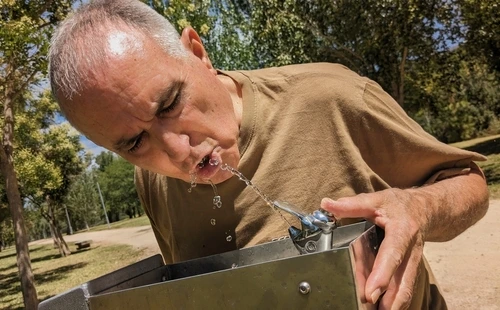
Once symbols of progress and public utility, drinking fountains enjoyed their golden age during Victorian times, offering respite from unclean water and providing an alternative to uncouth boozing for those fortunate enough to have access to them, heatwave or not. However, the following century saw a decline in fountains worldwide, largely due to the marketing of bottled water as a more sanitary and stylish choice.

Yet, just as fountains began to see a resurgence, the Covid-19 pandemic hit, dealing another blow to their popularity. Concerns about touching shared surfaces made people wary of using public fountains, despite evidence suggesting low transmission risks from such sources.
With climate change concerns taking centre stage and heatwaves sweeping across the US and Europe, the popularity of fountains is on the rise once again. In light of this, QS Supplies conducted a study to determine where one is most likely to find a drinking fountain nearby.
Key findings from the study revealed Montenegro to be the leading country, boasting an impressive 472.4 public water fountains per 100,000 people. Among cities, Zürich in Switzerland topped the list with 221.9 fountains per 100,000 people, closely followed by Basel. In the UK, Bournemouth emerged as the city with the highest number of public fountains, albeit still low compared with global leaders.
To arrive at these results, QS Supplies compared the number of public drinking fountains to local population numbers in every country and US state. The team also analysed data from 496 cities in the UK and US, as well as the most populated cities and capital cities worldwide. The study focused on countries and cities with populations of at least 100,000 people, and more than 276,000 public drinking fountains were assessed.
Looking for a fountain in a heatwave
Interestingly, the average number of drinking fountains globally is just 12.63 per 100,000 people, with most countries having fewer than ten fountains and only the top three exceeding 100. Montenegro‘s dominance in this regard stands out, with almost three and a half times more fountains per capita than second-placed Hungary.
Switzerland and Austria also emerged as leaders in outdoor drinking fountains, with several cities featuring prominently on the list.
In contrast, the UK’s fountain provision lags behind, ranking 53rd in the list with just 2.08 fountains per 100,000 people. This marks a significant decline compared with Victorian times when fountains were abundant in London and other parts of the country.
Bournemouth leads the nation with 4.36 public fountains per 100,000 people, while Scotland stands out with three cities – Edinburgh, Glasgow and Aberdeen – featuring in the top ten. On the other hand, England’s Leicester and Portsmouth have no public drinking fountains at all.
US state fountains
Oregon in the US is the top state for fountain provision, with a rich history of iconic drinking fountains like the “Benson Bubblers“. These fountains have become symbols of the state’s commitment to providing accessible drinking water to its residents and visitors, and can be beneficial during a heatwave.
However, not all cities in the US fare well. A story from Florida highlights the consequences of overlooking public drinking fountains in favour of bottled water sales. The University of Central Florida learned this the hard way when high temperatures from a heatwave and water shortages led to health issues for attendees, prompting the eventual installation of 50 fountains in their stadium.
Despite the challenges, cities like Washington DC lead the way in the US by promoting free, potable tap water through initiatives like the TapIt water bottle refilling network, which helps users find nearby refilling stations.
As the world faces both heatwaves and public health concerns, the return of public drinking fountains signifies a small but important step towards sustainable and accessible water sources for all. With increasing awareness and efforts to overcome challenges, the era of Victorian fountains may see a revival in the modern age.
[Read more: The curious history of London’s public drinking water fountains]






